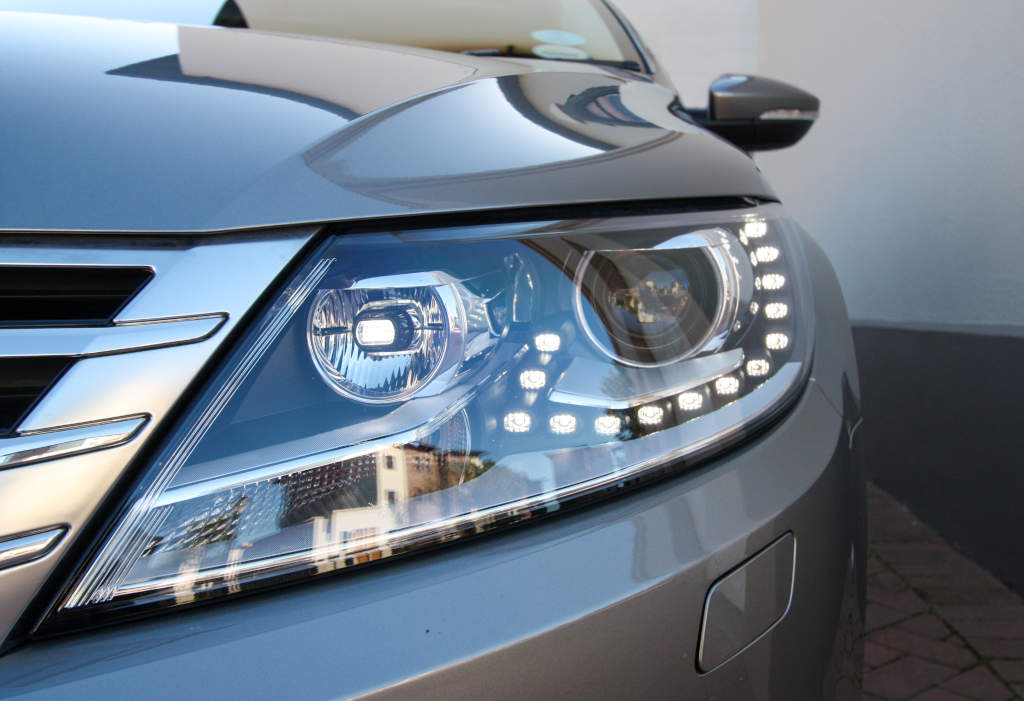Even the safest drivers can get in an accident now and then. Owning a vehicle with modern safety features such as airbags and automatic seat belts ensures you and your passengers have protection in an accident. They can also get you a passive restraint car insurance discount.
Safety features are paramount in protecting you from harm in motor crashes. But, as a bonus, they can also help you lower your rates. Insurance companies reward customers who drive vehicles with passenger protection systems. Seat belts and airbags almost always qualify for these savings. Some states even require that insurers provide discounts when cars have passive restraints.
In this article:
- Passive restraint basics
- How this reward works
- States that require an airbag discount
- How much you save
- Companies that offer it
- Frequently asked questions
Passive Restraint Basics
Auto manufacturers have made cars much safer over the years. They’ve introduced many new devices and safety features to ensure that you have the best protection possible before or during an accident.
In the auto safety world, a qualifying passive restraint device is any automatic vehicle safety feature that protects passengers in the event of a collision or crash. During a collision, your car will automatically deploy airbags or seat belts to keep you safe.
Passive restraints don’t help you avoid a crash. The sole purpose is to reduce injuries and fatalities. In a collision, a vehicle changes direction at high speeds. And so will a human body inside a vehicle.
Passive restraints should:
- Slow passengers as long as possible
- Distribute the force of the collision
In a high-speed crash, a passive restraint device can mean the difference between walking away with scratches and going to the emergency room. Insurance companies see these devices as a win-win. They save money when you both survive a severe crash and suffer as few injuries as possible. It also means that your insurer saves money, which it passes on to you.
Active vs. Passive Devices
Ideally, you’ll see a lot of both types of safety features when glancing at a vehicle’s spec sheet. To avoid confusion, it’s a good idea to know the difference between them. Luckily, it’s very simple. Active devices help you avoid accidents, while passive devices are there to protect you during an accident. A good way to remember it is that the latter method protects your body rather than your car.
Active Restraint Examples
Active restraints won’t get you a discount. They will, however, make you much safer and could lower insurance rates in other ways. Below are some examples of active restraints:
- Electronic stability control
- Adaptive cruise control
- Automatic emergency braking
- Blind spot detection
- Lane departure warning systems
- Lane-keeping assist
- Rear-cross traffic alert
- Forward collision warning
Passive Restraint Examples
Depending on your insurance provider, any of these passive restraints could qualify you for a discount
- Self-locking seat belts with pretensioners
- Crumple zones
- High strength glass
- Airbags
- Airbag deployment thresholds
How the Passive Restraint Discount Works
Insurers lower auto insurance rates when you practice good customer and driving habits. Eligibility may be out of reach for some people, but there are other ways to save. Discounts for certain safety equipment is another way to reduce your premium.
Below are a few of the most popular vehicle safety discounts:
Auto insurers group passive restraints with this class of discount. Specific rules vary from one company to another, but several states require lower rates for cars with airbags and set a minimum amount qualifying drivers must save.
The standard requirement for the passive restraint discount is straightforward. You need either factory-installed airbags or automatic seat belts and occasionally both. Some insurers require multiple airbags that protect both passenger and driver. A few providers add side airbags to the list of prerequisites.
Having state-of-the-art features like these proves to your insurance company that you take safety seriously. Owning a car with modern devices designed to protect your body will also help you avoid costly personal injury claims from serious accidents.
Most cars on the market today come with airbags. They’ve been around since 1972, and are now standard equipment for almost everything on the road. Frontal airbags have been the market standard in sedans since 1998 and in larger vehicles since 1999. With these odds, you’ll likely be able to qualify.
States That Require an Airbag Discount
The passive restraint discount is so common that many insurers don’t even list it on their websites. If you’re shopping around and looking for something specific on a car insurance company’s website and don’t see what you’re looking for, be sure to reach out and ask. There’s a good chance it’s available.
Some states even require that insurers offer savings for certain safety features. The State of New York, for example, requires that providers reduce rates when the equipment meets federal standards.
Here’s a list of states that specifically require insurance discounts for passive restraints:
How Much You Save
How much the passive restraint discount lowers your premium depends on your provider. Each rewards customers for driving safer cars or carrying additional medical coverage. Most will see a reduction in costs for personal injury protection (PIP) or medical payments coverage (MedPay). For example, GEICO reduces rates up to 23% when airbags are equipped on vehicles. State Farm promises a rate reduction of up to 40% on some coverages. Be sure to contact your provider to see how much you can save.
Be aware that some insurance companies don’t offer this discount unless required. Even so, each provider has unique incentives and opportunities for savings. We recommend talking to your agent to find out more about what your carrier offers. You could also do a rate comparison between insurers to find a better deal. You just might be able to pay less for coverage with another provider.
Companies Offering the Passive Restraint Discount
Below is a list of the 11 major auto insurance companies that offer policyholders the passive restraint discount. Most require at least one airbag be present, but a few need to see several air bags installed in your car. And an even smaller number of providers include automatic seatbelts as a prerequisite.
American Family
The American Family auto safety equipment discount applies to policyholders if their vehicle has factory-installed airbags. You’ll save as much as 30% on the MedPay or PIP portion of your car insurance premium if you qualify. Try contacting an agent to learn more.
State Farm
The State Farm passive restraint discount will be applied to your policy if your vehicle’s model year is 1993 or newer and airbags are present. You also qualify if your car has another federally approved safety system, such as an automatic seat belt. State Farm takes up to 40% off medical-related auto insurance coverages.
GEICO
The GEICO airbag discount provides savings to policyholders with vehicles that have factory-installed supplemental restraint systems (SRS). Qualifying for this reward could reduce the PIP or MedPay section of your auto insurance policy by 23%.
Farmers
The Farmers passive restraint discount offers savings to policyholders with vehicles that have airbags or automatic seat belts. Keep in mind that this insurer doesn’t offer this reward in every state. It may be a good idea to talk to an agent to check availability.
Nationwide
To qualify for the Nationwide passive restraint discount your car must have full front-seat airbags. Qualifying drivers could save up to 20%. Contact your agent to learn more.
Amica
Amica lowers car insurance rates by up to 20% for vehicles with qualifying safety features. You’ll need to contact an agent or reach out directly to the insurer for more information.
The General
The General is a high-risk auto insurance provider. It caters to people who pay the highest rates of any group of drivers due to having one or more severe violations on their record.
To curb the expensive rates that high-risk drivers face, The General provides several vehicle safety discounts, including one for passive restraint systems like airbags and seatbelts. Savings vary from state to state, but most drivers save about 8%. If your car any of these devices, you probably qualify.
AARP/The Hartford
The Hartford (AARP) passive restraint discount rewards customers for having several vehicle safety features. Unlike most insurance providers, your car must have more than one airbag to qualify. Savings vary by state. Most save about 3%, but you’ll need to check with your agent or contact the insurer directly to learn more.
Erie
Erie Safety Savings is a general vehicle safety discount offered to those who own cars with factory-installed airbags. Savings vary by state, so it’s best to contact an agent to learn more. Not available in North Carolina or Kentucky.
NJM
NJM offers a vehicle safety equipment discount for passive restraints, including airbags and automatic seat belts. Both factory-installed and after-market systems qualify. NJM doesn’t explicitly state how much you’ll save. Prices almost always vary by state. So, you’ll need to contact an agent to learn more.
Shelter
The Shelter passive restraint discount applies when your vehicle is equipped with factory-installed airbags or federally-approved automatic seat belts. To find out how much you can save, contact Shelter to learn more.
Passive Restraint Discount by Company
| Insurance Company | Max Savings |
|---|---|
| American Family | 30% |
| State Farm | 40% |
| GEICO | 23% |
| Farmers | Varies |
| Nationwide | 20% |
| Amica | 30% |
| The General | 8% |
| AARP/The Hartford | 3% |
| Erie | Varies |
| NJM | Varies |
| Shelter | Varies |
Frequently Asked Questions
What is a passive restraint?
Any vehicle safety device that automatically deploys in a collision to protect passengers qualifies as a passive restraint. These are usually airbags, crumple zones, and automatic seat belts.
What’s the difference between active and passive restraints?
In auto safety, a passive restraint protects you after a collision occurs. On the other hand, active devices prevent accidents. These devices have their own insurance discounts and include daytime running lights, rear and side mirrors, and anti-lock brakes.
Do seatbelts qualify as passive restraints?
A seatbelt is an active device because you must manually buckle it. The car doesn’t do it for you. Only automatic seat belts and ones with pretensioners qualify for the passive restraint discount.
What is an example of a passive restraint?
There are only two good examples of passive restraint systems on today’s cars. The first is airbags, which deploy to protect your body from impact when your vehicle collides with an object. The second is automatic seat belts, which also deploy during a collision to protect you from sharp motions.
Can I retrofit my car with airbags to qualify for a discount?
For the time being, probably not. Most auto insurance companies specify that this equipment must be factory-installed to qualify. It could change over time. But it doesn’t matter for most people because airbags have been federally mandated for all passenger vehicles since 1999.
If you have an older, perhaps a classic collector car, installing airbags can be cost-prohibitive. Merely replacing airbags after an accident, where they deploy, costs between $2,000 and $6,000, depending on whether critical components suffer damage. Some argue that it’s not merely unsuitable but also unsafe to install airbags on vehicles manufactured before the 1970s.


